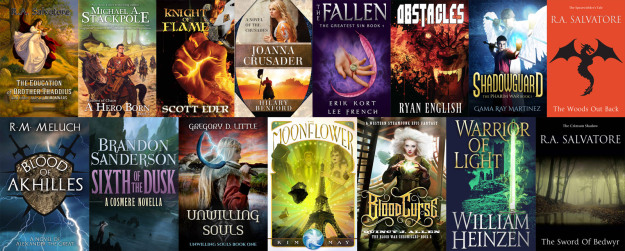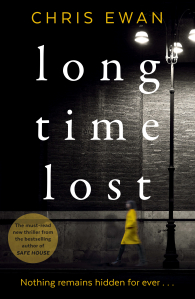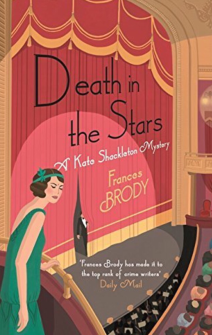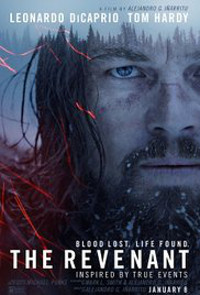A pioneer of contemporary American music, Philip Glass is best known for his highly repetitive compositions. But behind their minimalist façade, Glass’s work hides an unsung influence—that of certain twentieth-century technologies.
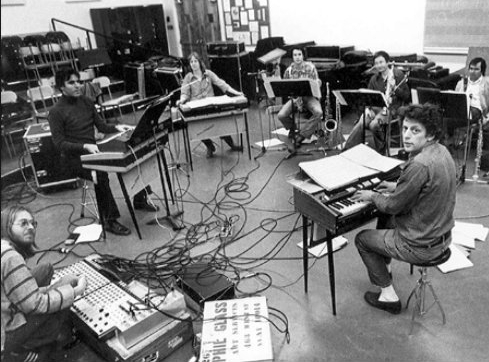
He celebrated his eightieth birthday this past January, but his work isn’t going anywhere anytime soon. Philip Glass is perhaps one of the best-known and most influential contemporary American composers, and his creations have had an undeniable impact upon the musical soundscape of the last half-century. Glass is best known for pieces like his five-hour-long opera Einstein on the Beach (1976); his collection of chamber music, Glassworks (1982); and the scores for such films as Godfrey Reggio’s experimental Koyaanisqatsi (1982) and Stephen Daldry’s reworking of Virginia Woolf via Michael Cunningham, The Hours (2002).
Even if you think you’ve never heard Glass’s music, you probably have—or at the very least, you’ve been exposed to musicians and composers who take inspiration from him. Glass’s repetitive musical structures are immediately recognizable as being sui generis. Favoring classical instruments like pianos, harpsichords, violins and other stringed instruments; full-blown orchestras; and yes, even the human voice, Glass’s music features synthesizers and other electronic techniques that also attracted other composers in his generation like Terry Riley and Steve Reich. Glass’s musical opuses have, at best, influenced generations that have followed and, at worst, inspired a multitude of imitators.
But underneath the veneer of his so-called minimalist, classical compositions, which are in fact highly complex, lies an undercurrent that is little known. Namely, the influence of developing twentieth-century technologies upon his highly distinctive style and the incorporation of certain hidden technologies run though his career.
You might think that technology is at odds with Glass’s music, but in reality, it is ingrained in the very DNA of his style and career. By looking at the musical and technological context in which Glass developed his style through certain examples of his peers like Riley and Reich as well as by examining the aesthetic and stylistic mechanics of one of his most famous works (Einstein on the Beach, 1976), we can find that, although buried deep in their fabric, the machine is ever-present in Glass and his music.
Two Crucial Encounters in Paris
By his own account, the story goes that Philip Glass’s characteristically brief, repetitive, and seemingly minimal melodies interwoven into a musical tapestry was born in a decisive encounter in Paris in the 1960s.
After receiving his master’s degree in music composition from the Julliard School of Music in New York City in 1962, Glass found himself disillusioned by the American musical scene at the time and ventured to the French capital for a change of pace. There, he studied under Nadia Boulanger, a renowned conductor, organist, and teacher of musical composition, whose other pupils include Aaron Copland, Virgil Thomson, and Quincy Jones. With Boulanger, Glass continued his classical education during intense nine-hour-long days, over the course of which he paid special attention to the “harmony, counterpoint, that kind of stuff”[1] exemplified by milestones like Bach and Mozart.
In 1964, Glass handled the notation was responsible for notating renowned Indian sitarist Ravi Shankar’s score for ChappaquaBut according to Glass, the even more decisive moment—in terms of greater impact on his musical compositions—came when he began working in Paris with noted Indian sitarist and composer Ravi Shankar. This is, in large part, true. In 1964, Shankar had hired Glass to be his assistant and he principally handled the notation of the film score for Chappaqua, Conrad Rooks’ film that would be released in 1967. The goal was to remain faithful to the rhythmic complexity of Shakar’s work while making it accessible to Western musicians through notation. Being forced to bridge Eastern and Western musical traditions completely upended Glass’s ideas concerning rhythm, harmony, tempo, and melody. Within Indian music and culture in particular, Glass discovered the importance of cycles as opposed to the traditional, Western progression of linear beginnings and ends. Glass even found that erasing the bar lines in his notations allowed him to better access the “flow of the rhythm,”[2] an aspect of musical composition that he has found under-appreciated in conventional Western music.
The (Musical) Machine of Philip Glass
When delving into the influences upon Philip Glass’s creative mechanism, you don’t simply find a list of teachers and other mentors. Instead, there are various contextual elements that should be considered, too.
In the first place, before even formally studying music in higher education, as a student at the University of Chicago in the 1950s, he specialized in mathematics and philosophy—two subjects that wouldn’t necessarily lead you to imagine that Glass would become one of the best-known composers of our time. Of course, he had also played the violin and the flute as a child and would pursue music at Julliard, but Glass’s interest in these two other areas—mathematics and philosophy—can be clearly seen in his musical style, such as in his opera Einstein on the Beach.
Next, Glass belonged to a loose group of classical American musicians that also included La Monte Young, Terry Riley, and Steve Reich. They would come to be known as minimalists because of their interest in minimizing certain aspects of composing. They made frequent use of such techniques as the repetition of small musical units and motifs, limited musical progression or the lack thereof, and even a trance-like pulse. After all, minimalism was originally known as the New York Hypnotic School. Although Glass has questioned being merely known as a member of the group, quoting the often-non-minimalist nature of his work, minimalists like Glass employed several other signature techniques that reveal another important source of inspiration—namely, the technology of magnetic tape.
Let’s look at two fascinating examples of these techniques.
The first, phase shifting, occurs when two instruments play the same composition but at slightly different tempos, resulting in the gradual divergence and eventually the reconvergence of the two. Initially the two instruments seem to coincide, but over time they begin to move out of sync, creating a sort of echo. Eventually, the dissonance becomes more complex before moving back toward the initial position.
In Steve Reich’s Piano Phase (1967), two pianists move out of sync before reconnecting (around the 14-minute mark) through the phase shifting process.Through the second, additive process, for instance, Philip Glass says, “A simple figure can expand and then contract in many different ways, maintaining the same general melodic configuration but, because of the addition (or subtraction) of one note, it takes on a very different rhythmic shape.”[3] As you might expect, the opposite effect is called subtractive process. Often rigorously adhering to each, Glass’s use of additive and subtractive processes lies at the intersection between his interest in musical theory and mathematics.
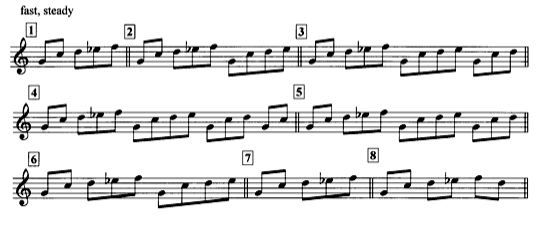
It’s true that these two techniques did exist in some form prior to the twentieth century. The former process is similar to the rounds found in the medieval infinite canon structure, popularized in nursery rhymes turned songs like “Row, Row, Row Your Boat.” The latter can be found, for instance, in traditional Indian music. Nonetheless, twentieth-century technology in the form of magnetic tape informed both musical techniques in their modern usage by contemporaries of Philip Glass and by the man himself.
On the one hand, while phase shifting is often associated with Steve Reich, who revolutionized the process, other composers employed similar processes. Much like the French experimental artists of the musique concrète movement developed by Pierre Schaeffer in the 1940s, the American composer Terry Riley experimented with tape looping and delay. In 1963, Riley created music for a theatrical work entitled The Gift, in which he mixed recorded loops of Miles Davis’s “So What.” The following year, Riley’s groundbreaking “In C” premiered. The piece involves a group of some thirty musicians, each of whom plays a different short, musical phrase repeatedly at will—for as long as desired—in the key of C. The randomized reiteration of these micro-compositions brings to mind the potential of tape loops, but also the happenstance of coinciding that occurs within phasing. In 1967, Riley took looping to the ultimate level: His “time-lag accumulator” formed an infinite loop of magnetic tape between one tape machine that recorded a second while it played this very tape. The recording becomes even more complex as the endless tape continues its automated loop.
Terry Riley discusses tape loops and their influence on his musicBeginning with pieces like It’s Gonna Rain (1965), Steve Reich composed music through the failure of tape player machinery. By letting two slightly out-of-sync Wollensak tape recorders undergo phase shifting, loops of a preacher’s apocalyptic sermon in the shadow of the Cuban Missile Crisis become musical in their divergence and recovergence. After an intermediate step combining magnetic tape and a soprano saxophone in Reed Phase (1966), Reich soon began to adapt the technique to purely acoustic live compositions like Piano Phase and Violin Phase (both 1967), Phase Patterns (1970), and Drumming (1971). Clearly rooted in Reich’s earlier experiments with technology, these compositions represent a counterpoint to Glass’s own highly repetitive work.
On the other hand, additive process can be seen notably in works like Frederic Rzewski’s “Les Moutons de Panurge” (1968), in which the musical phrase is stretched from a single note to a sixty-five by simple addition of one note at a time. However, Philip Glass’s additive process is often more complex with longer additions. You can clearly hear the multi-note additions in “Two Pages,” one of the earliest minimalist examples composed in 1968 for a piano and an electric organ. The effect recalls the new possibility provided by magnetic tapes of expanding and contracting recorded sound by changing the speed or even adding additional elements like loops.
While the influence of certain figures like Nadia Boulanger and Ravi Shankar is undeniable, we shouldn’t ignore the crux between modern musical composition and technologies like magnetic tape. In looking more closely at one of Glass’s most famous works, Einstein on the Beach, we can discover see another facet of the influence of technology upon Glass’s career and musical style.
The Operatic Marriage of Music and Technology
Written largely in 1975 and having premiered at the Festival d’Avignon the following year, Einstein on the Beach is Glass’s first opera as well as his first collaboration with noted American experimental theater director and playwright Robert Wilson. Glass created the music and lyrics, while Wilson was responsible for the direction and set and light design. For Einstein on the Beach, Glass and Wilson worked closely together in conceiving an opera based on a historical figure—to wit, Albert Einstein—without resorting to a traditional narrative structure. It was not only a turning point for Glass’s career but also for his musical style. For the first time, certain distinctive elements seen in his previous work like Music in Twelve Parts (1971-74), such as additive processes and cyclic structures, take on a richer texture here.
In conjunction with Wilson, Glass also developed various other elements of the opera, such as its overall length (between four and five hours), the required cast (four principal actors, twelve singers who also at times play the role of dancers and actors, a solo violinist dressed as Einstein himself, and musicians playing desired instruments), and its division into four acts with five knee plays that frame each act. Wilson’s signature technique, the knee plays are synonymous with intermezzi, the short, traditionally instrumental movements connecting the various acts of an opera. Glass has stated that the terminology comes from the fact that “the ‘knee’ refer[s] to the joining function that humans’ anatomical knees perform.” The opera also includes spoken-word texts written by Christopher Knowles, Samuel M. Johnson, and Lucinda Childs (who also provided the choreography).
 Robert Mapplethorpe’s iconic photo of Glass (left) and Robert Wilson (right) in 1976 at the time of Einstein on the Beach. © Robert Mapplethorpe Foundation
Robert Mapplethorpe’s iconic photo of Glass (left) and Robert Wilson (right) in 1976 at the time of Einstein on the Beach. © Robert Mapplethorpe Foundation
More importantly here, beyond its subject of a man whose work sparked major technologies in the twentieth century, Einstein on the Beach provides a clear example of the technological influence upon the theme of Glass’s music.
Through the use of tableaux, even the structure of the opera highlights certain key technologies that relate to Einstein’s life and more importantly his work in astrophysics. Einstein features three main recurring visual themes—the Train, the Trial, and the Spaceship—as well as three major musical themes to match. Take for instance the second main tableau of the opera, the Trial: Glass and Wilson’s opera puts Einstein, his work, modern science, or even all of the above on trial. It imagines Einstein’s possible reflections on the devastating repercussions of his life’s work, resulting in the atomic bomb among other technologies.
Einstein begins with the arrival of the Train, a revolutionary nineteenth-century technology, and toward the end, a twentieth-century technological fantasy-become-reality—the Spaceship—is introduced. Actors often speak dialogues with mechanical inflections. In the opening knee play, one actress performs a text written by American poet and painter Christopher Knowles, and another recites numbers at random. Knowles’s disordered text is, at once, reminiscent of texts produced by artificial intelligence and perhaps a product of the author’s autism. In either case, we are privy to an alternate form of communication. Lastly, Lucinda Child’s choreography for the introduction calls to mind robots performing various mechanical tasks like typing, sending telegrams, and even walking—even if her dance arrangements later in the opera are much more fluid, natural, and human.
Nonetheless, more interestingly here, technology also has left a mark on the musical texture of Glass’s opera—albeit often in less direct ways. We have already seen that certain Glassian flourishes were inspired by innovations in music. However, here Glass makes special use of a relatively new, electronic instrument, too. The Farfisa, an early portable electronic organ, is present throughout almost the entire opera and is an integral part of many of Glass’s compositions beyond Einstein. The choice of an electronic instrument in place of a pipe organ relates not only to the modernity of the themes of the opera but also of the compositions themselves.
As was the case for his contemporary Steve Reich, the technique of looping, made possible by magnetic tapes, heavily influenced the musical structures of Einstein on the Beach. In Act I, Scene 1 “The Train,” Philip Glass makes use of what Reich would call phasing for the first of three musical themes linked to the Train. This theme later reappears in Act II, Scene 2 and in Act IV, Scene 1. Originally in reference to physical magnetic tapes that moved in and out of sync, the process of phasing soon came to be applied to compositions that replicate this effect. Glass plays with this technique throughout the opera, often causing his melodies to diverge and then reconverge in processes of expansion and contraction.

While Glass and Wilson do take into account the negative power of modern technologies like the atomic bomb, they also show technology in a positive light, too. Glass highlights the beauty of technology through his music and lyrics. Glass foregoes traditional lyrics for his compositions and, instead, creates texts of songs based on numbers and the syllables of solfège—that is, do, re, mi, fa, so, la, ti—in a very schematic way. According to Glass, “When numbers are used, they represent the rhythmic structure of the music. When solfège is used, the syllables represent the pitch structure of the music. In either case, the text is not secondary or supplementary, but is a description of the music itself.” Therefore, as described by The New York Times’ original review of the opera, the unconventional lyrics point toward the transcendent beauty that is found in the “‘mixture of mathematical clarity and mystical allure,’” which provides a drastic counterpoint to any consideration of the atomic bomb. As we can see elsewhere in Glass’s career, technology—presented both positively and negatively—is not only present in the themes of his music but also in its style, texture, instruments, and even sometimes lyrics.
The Glass Machine Moves Into Popular Music
Philip Glass’s musical compositions have not only drawn inspiration from certain technologies—particularly, magnetic tape—that clearly influenced his contemporaries, but these compositions have also incorporated certain technologies into their very essence. In his opera Einstein on the Beach, Glass makes use of instruments, effects, themes, and even lyrics. Additionally, Glass’s own influence on generations of musicians has been far-reaching, with these artists oftentimes employing technologies for their own music.
In the 1970s, minimalist techniques drawn from technologies infiltrated rock along with musical technologies themselves like synths and electric instruments. You can clearly hear additive process work in cycles within Rhys Chatham’s Guitar Trio (1977) where electric guitars and drums compound an initial rhythm. Produced by Brian Eno, David Bowie’s 1977 album Low not only found inspiration in composers like Glass and Steve Reich but also became the source for Glass’s Symphony No. 1 “Low” (1992).
David Bowie’s synth-y and highly repetitive “Weeping Wall” from Low (1977)Even more recently, a new generation of artists like Beck, Zola Jesus, and Devonté Hynes (known best under his current moniker Blood Orange) continue to find inspiration from the Glass machine. In September of this year, Hynes actually interviewed Glass himself for NPR. Next March, he will be one of five contemporary musicians to perform his interpretation of Glass’s complete Etudes at the Kennedy Center in Washington, D.C.
Another group of musicians and composers in their own right actively continue to display the inspiration they draw from Glass’s music. In 2013, four prominent, young musicians and composers came together to work on a project about space, mythology, and even technology that would be called Planetarium. (Earlier this year, a studio version was finally released.) They are Nico Mulhy, Bryce Dessner (of The National), Sufjan Stevens, and James McAlister, a drummer. On Planetarium, songs like “Mercury” seem to show Glass’s influence. Muhly himself studied with Philip Glass, whom he calls “mathematical, organic and achingly beautiful,” and acknowledges the importance of Glass on his own music. Bryce Dessner has even worked with the Kronos Quarter, a frequent collaborator of Glass and his contemporaries. Within Sufjan Stevens’ music, Glass’s influence has ranged from primarily acoustic songs that feature a Glassian obsession with repetition to heavily electronic pieces. On the schizophrenic album The Age of Adz (2010), inspired by an artist diagnosed as such (Royal Robertson), technology plays an important role in the composition, musical texture, and even themes of the songs. All while making use of Glassian techniques.
As this landmark year of the eighty years of Philip Glass draws to a close, it seems we have only scratched the surface of the legacy of Glass’s music. Despite their so-called minimalist nature, Glass’s compositions are highly complex and continue to warrant being explored, especially because Glass’s influence has been so far-reaching. Musicians and composers working in the new millennium continue to be draw inspiration from Glass’s work—whether intentionally or through others who have done so. In such a way, Glass’s own hidden technological influences permeate through the music of others. There is no doubt that the whirring machine of Philip Glass continues to extend itself into the contemporary musical landscape. It shows no sign of slowing down anytime soon.
Corey Steinhouse.
Sufjan Steven’s “Get Real Get Right” from The Age of Adz (2010) employs a limited form of additive process in the percussion
Notes:
[1] “When Philip Glass Met Ravi Shankar.” Interview with Philip Glass. Red Bull Music Academy. 5 February 2014.
[2] ibid.
[3] Glass, Philip. Music by Philip Glass, Da Capo Press, 1995, p. 58.
Advertisements Share this: